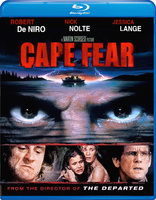Cape Fear Blu-ray Movie
HomeCape Fear Blu-ray Movie 
Universal Studios | 1991 | 128 min | Rated R | Oct 18, 2011Movie rating
7.5 | / 10 |
Blu-ray rating
| Users | 4.2 | |
| Reviewer | 4.0 | |
| Overall | 4.0 |
Overview
Cape Fear (1991)
A convicted rapist, released from prison after serving a 14 year sentence, stalks the family of the lawyer who originally defended him.
Starring: Robert De Niro, Nick Nolte, Jessica Lange, Juliette Lewis, Joe Don BakerDirector: Martin Scorsese
| Drama | Uncertain |
| Psychological thriller | Uncertain |
| Crime | Uncertain |
| Thriller | Uncertain |
Specifications
Video
Video codec: VC-1
Video resolution: 1080p
Aspect ratio: 2.35:1
Original aspect ratio: 2.39:1
Audio
English: DTS-HD Master Audio 5.1 (48kHz, 24-bit)
French: DTS 5.1 (48kHz, 24-bit)
French: DTS 5.1 (768 kbps, 48kHz, 24-bit)
Subtitles
English SDH, Spanish
Discs
50GB Blu-ray Disc
Single disc (1 BD)
BD-Live
Mobile features
Playback
Region free
Review
Rating summary
| Movie | 4.5 | |
| Video | 4.0 | |
| Audio | 4.0 | |
| Extras | 4.0 | |
| Overall | 4.0 |
Cape Fear Blu-ray Movie Review
Come Out, Come Out, and Play with Marty
Reviewed by Michael Reuben October 15, 2011You could roughly divide the reactions to Martin Scorsese's Shutter Island along the lines of those who share the director's passion for old-fashioned Hollywood artificiality and those who don't. One way or another, Scorsese's imagination always bends back to his formative afternoons sitting in the dark (or watching TV) projecting himself into the creations of the old studio system. But Scorsese is never content just to repeat; he always wants to push the old forms in a new direction. Shutter Island became such an over-the-top exercise in the thriller machinations of nothing-being-what-it-seems that people are still arguing over the ending (which, I suspect, was the point). Scorsese's previous venture into thrillers, his 1991 remake of J. Lee Thompson's Cape Fear (1962), bore the same stamp. Thompson's film was elegantly crafted and brilliantly performed, but it was (as Scorsese notes in the accompanying documentary) a "B" movie, in which the characters weren't very deep and the plot dynamics were straightforward. All Robert Mitchum's Max Cady had to do to terrify audiences was be a cool, self-possessed rapist, even though prevailing standards would not permit the word "rape" to be used. When Mitchum rubbed eggs on Peggy Bowden (Polly Bergen), audiences got the point. But Scorsese wanted something more extreme and complex, and he wasn't particularly concerned about realism in the process. (It's hard to imagine a mainstream director working today who more embodies Kubrick's dictum that "interesting is better than real".) In Thompson's film, Cady is a bad man who targets a good man, Sam Bowden (Gregory Peck), and his family, because the good man did the right thing in standing up against evil. There are no moral ambiguities, just the need for eternal vigilance to keep evil at bay. Characters of such simplicity don't interest Scorsese. He's much more drawn to those, like Mitchum's preacher in Night of the Hunter, who bear the marks of both good and evil. In Scorsese's Cape Fear, Max Cady is a wronged man -- wronged by Sam Bowden. No matter how vilely and viciously Max behaves, he never tires of reminding the Bowden family that it was Sam who brought this fate upon them by setting himself up as Max's judge and jury -- and now Max has assumed that very role over Sam. Usurp the system of justice against others, and they'll usurp it against you, with a vengeance (literally). At one level, Scorsese's remake remains a revenge thriller, but at another -- and this is the level where the film lives and breathes -- it's about sin, conscience and the inexorable revelation of dirty secrets. "I told you, you can't escape your demons just by leavin' home", Max says to teenage Danielle Bowden, but he might as well be speaking to Sam. In the final act of the film, when Max performs physical feats and withstands injuries that seem more appropriate to the indestructible villain of a slasher film than a realistic thriller, it's because he's no longer entirely human (he even says so). He's become a metaphor for all the guilty truths that the Bowden family can't (or won't) say to themselves or each other. And that's how you know you're watching a Martin Scorsese picture.
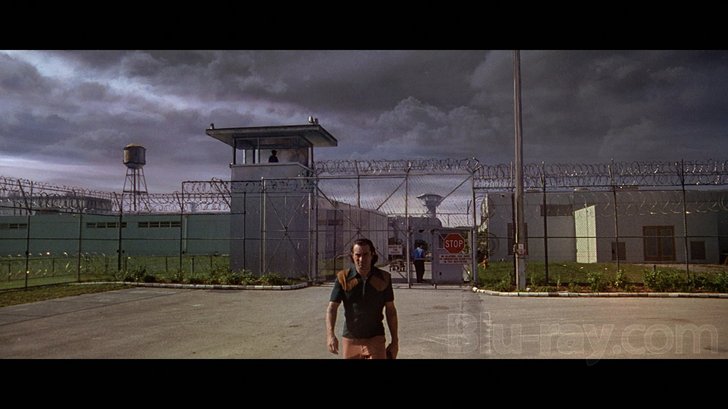
To all outward appearances, the family of attorney Sam Bowden (Nick Nolte) is normal and happy. Sam has a lucrative practice in New Essex, North Carolina, where a senior partner, Tom Broadbent (Fred Dalton Thompson), thinks so highly of him that he's entrusted Sam with his daughter's divorce case. Sam's wife, Leigh (Jessica Lange), and teenage daughter, Danielle or "Dannie" (Juliette Lewis), live in a large elegant Southern home surrounded by trees, a wall and a gate at the end of the driveway. A maid, Graciella (Zully Montero), comes several times a week. But just below the surface, the Bowden family has problems. They moved to New Essex after the marriage nearly broke up over Sam's infidelities. Currently he's flirting (and so far nothing else) with a staff member in the court clerk's office named Lori (Illeana Douglas), and Sam knows that, if Leigh finds out, he'll be in trouble. As for Leigh, she's clearly discontent without knowing quite why. Maybe it's the looming "empty nest" syndrome, as Dannie is clearly growing up fast -- fast enough to sense the tensions roiling beneath her parents' show of solidarity. Adolescence is not a good time to be feeling the dependability of your home life slipping away, which may be why Dannie seems to prefer the company of Graciella. As a lawyer, Sam Bowden has a tendency to cut corners. Fourteen years ago, as a public defender in Atlanta, he cut a big one when defending a (then) illiterate pentecostal misogynist accused of rape, Max Cady (De Niro). An investigator's report revealed that the victim had numerous lovers, which, in the days before rape shield laws, could have been used to damage her credibility. But Sam decided Cady was a danger to society who belonged in jail and buried the report. Now, having served his time, learned to read, and taught himself the law, Cady has emerged from prison with a single purpose: to destroy Sam Bowden. Cady's campaign is deliberate, precise, brazen and thorough. He uses knowledge of the law, close observation of both the Bowden family and people they know, psychological warfare and an almost uncanny ability to anticipate Sam Bowden's next move. In many ways, Cady becomes Sam's chilling doppelgänger. He shows up whenever the family goes out, whether to the movies or a parade on the Fourth of July. He's first in the door to hire away the well-connected criminal lawyer Sam's boss recommends to obtain a restraining order (Gregory Peck in a sly cameo). He spots Sam with Lori, then reappears with her at just the right moment. He shows up at the Bowden home unexpectedly, but never openly crosses the property line (which would be trespassing). Eventually he starts appearing in Sam's dreams (or are they?). Indeed, no matter what plan Sam devises to deal with Cady, Max is one step ahead. It's as if Cady knows what Sam is thinking before he thinks it. The police, in the person of Lt. Elgart (Robert Mitchum, another sly cameo), can do nothing, because Cady either hasn't broken the law, or does it in such a way that he leaves no usable evidence. But when Sam discovers that Cady has been posing as a high school drama teacher to get at Danielle, it pushes him over the edge. (The key scene between Cady and Danielle is almost certainly what got Juliette Lewis an Oscar nomination along with De Niro.) Sam ditches the law entirely and hires a private detective, Kersek (Joe Don Baker), who is as good at cutting corners as Sam. But not good enough, as it turns out. Eventually, the family has no option left other than to flee to their houseboat on the Cape Fear River, where Cady puts Sam on trial while a storm rages outside and the river swells to dangerous levels. "Now you and I will truly be the same!" Cady thunders at Sam, and certainly by this time they are alike in their single-minded determination to destroy one another. Among the many interesting transformations that Scorsese worked on the 1962 film is the use of Bernard Herrmann's memorably insistent score (augmented with additional material from Herrmann's unused music for Torn Curtain). Elmer Bernstein rearranged the cues so that they occurr at different points in the story, but the biggest change was in the approach to the final mix. In J. Lee Thompson's film, music served a traditional role of accompanying and augmenting the action. In Scorsese's reimagining, the musical cues are bold, assertive and frequently much louder than a typical score. Certain cues, especially the opening four-note horn blast, insert themselves into the story like a character making an entrance, as if a heavenly chorus (or a demonic one) were announcing an unearthly arrival. The approach is consistent with the subjective, emotionally fraught tone that screenwriter Wesley Strick established when he reframed the story as a memory of Danielle's. "My reminiscence", she begins, and we all know that memory shades every event with the passions and sentiments of the person recalling it. That's why, as the film fades to black-and-white (and then red) on Danielle's eyes as she huddles in the mud on the river bank, her final words carry so much conviction, even as her voice drops to a whisper:
"Still, things won't ever be the way they were before he came. But that's all right. Because if you hang onto the past, you die a little every day. And for myself, I know I'd rather live. The End."
Cape Fear Blu-ray Movie, Video Quality 
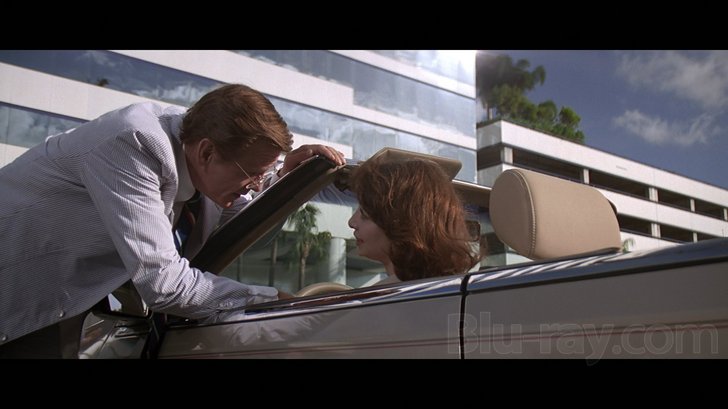
After many Blu-ray disappointments with Universal catalogue titles, I'm happy to report good news on Cape Fear. But let's pause a moment for a look back. Cape Fear occupies a significant place in Martin Scorsese's resumé, because it was the first film he shot in 2.35:1 ratio. Scorsese has said many times (and again in the documentary on this disc) that he had refrained from using the wider frame, because he didn't want the images destroyed for TV broadcasts by panning and scanning. By 1991, though, he expected to see widescreen televisions adopted shortly, allowing home viewers to experience his original compositions. For his first venture into anamorphic widescreen, Scorsese chose two-time Oscar-winning cinematographer Freddie Francis (Glory and Sons and Lovers), with whom he worked closely in creating the film's framing. Scorsese's hopes for the quick adoption of widescreen home video turned out to be wildly optimistic, and he ended up overseeing the 1.33:1 version personally. I wish I'd kept a copy, because it's a fascinating artifact, in which Scorsese seems to be going out of his way to draw attention to the panning and scanning, as if to say: "Do you see what your square screen is forcing me to do?" Purists could buy the widescreen laserdisc, which was heartbreaking, because analog NTSC video was no match for Freddie Francis' detailed imagery. At least until the latter half of the film, when most scenes were dark enough to conceal the flaws, Cape Fear on laser was an orgy of aliasing. Sam Bowden's wire-rim glasses were a constant distraction. Instead of watching the strain in his eyes, you studied the flicker across his forehead. Ten years after the film's release, a two-disc DVD edition finally gave home viewers something approximating Cape Fear's true look. The aspect ratio was correct, the aliasing was tamed, and the only real flaw was the lack of sufficient detail to let you appreciate the late Henry Bumstead's meticulous production design and the increasingly chaotic action, especially in the sodden third act. That failing has been remedied on Universal's 1080p, VC-1-encoded Blu-ray, which demonstrates that Universal is fully capable of doing a catalogue title justice, when it wants to. Images are detailed, smooth and film-like throughout. Traces of grain remain in the image, but in minor amounts and without visible evidence of high-frequency filtering, transfer-induced ringing or other inappropriate digital tampering. Black levels are strong, which becomes increasingly essential as the action shifts to darkened interiors and hours after dark. The palette of Cape Fear is an interesting study in the subliminal use of color. When we first meet the Bowden family, much of the clothing, furnishings and general surroundings are beige, pale and pastel; the color scheme reflects the tame surface of a family where feelings are being held in check. Max, who holds back nothing, is associated with brighter and more saturated colors; he drives a red car, and the shirt he's wearing when he encounters Lori is a deep red. When Leigh Bowden first sees Max, he's sitting on a wall with fireworks exploding behind him in intense CGI-generated hues that, as noted in the documentary, real pyrotechnics are incapable of producing. (No one ever accused Scorsese of being subtle; Leigh has just experienced bland sex with her husband, and the imagery suggests that Max would offer something different. As Max tells her later in the film, "A few minutes with me, darlin', and you'll be speaking in tongues." Unless, of course, he bites it off.) I've watched the concluding sequence on the storm-tossed houseboat many times, but this is the first time I can remember feeling that I was really seeing everything while it happened. Despite the confusion, Scorsese's shots and Thelma Schoonmaker's editing do show you how everyone ends up where they are. But now you can finally see all of it, even with the water pouring in. ("No more water pictures!" Scorsese told an interviewer, shortly after the film wrapped.)
Cape Fear Blu-ray Movie, Audio Quality 
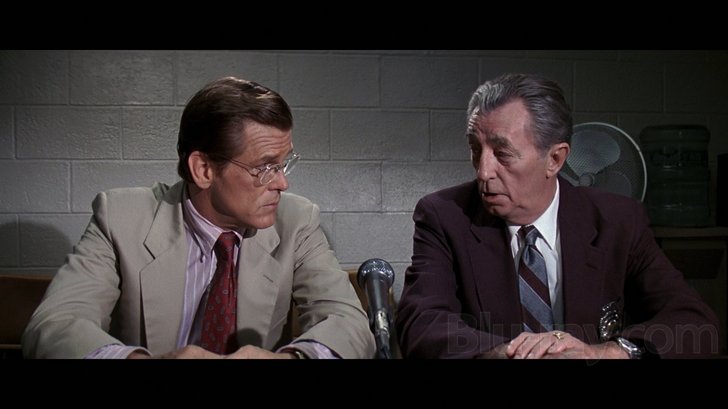
Cape Fear was released in Dolby Surround and later remixed for discrete 5.1, which is here presented in DTS lossless. Water is the dominant presence in the surrounds, and it makes itself heard immediately during the opening credit sequence, a mini-movie by Saul and Elaine Bass featuring image after image of rippling water and mysterious reflections. Whenever anything in the film relates to water, whether as rainfall or river flow, the sound expands into the surrounds. Even the anticipation of water triggers surround activity; as the Bowden family drives toward Cape Fear, faint sounds of water and river birds can be heard in the surrounds, as if we are inside their heads experiencing their anticipation. And, of course, once they're on the boat, the surrounds are never silent. The end credits are unusual, because they continue this motif. There is almost no music, but thunder, flowing water and bird cries continue to echo around the room. Keep listening to the very end, and you will hear something that sounds like an amusement park ride, complete with squealing patrons. In their original version, the credits concluded with an ad for the Universal Studios theme park, and that sound cue accompanied the ad. Even with the ad gone, the cue remains. Leaving aside the sounds of water, the front soundstage is fully occupied with the powerful Bernard Herrmann score (as rearranged and "punched up" by Elmer Bernstein) and various amped-up sounds that jolt both the characters and the audience at key moments, whether it's a telephone ringing, Max's laughter, or the sound of racketball. The dialogue sounds natural at some times, and at others it too sounds slightly amplified -- not, I suspect, as a result of poor ADR, but because it had to be balanced with the barrage of other "subjective" sounds of which the film's sonic dimension is composed. Overall, it's a powerful and distinctive soundtrack, and the presentation does it justice.
Cape Fear Blu-ray Movie, Special Features and Extras 
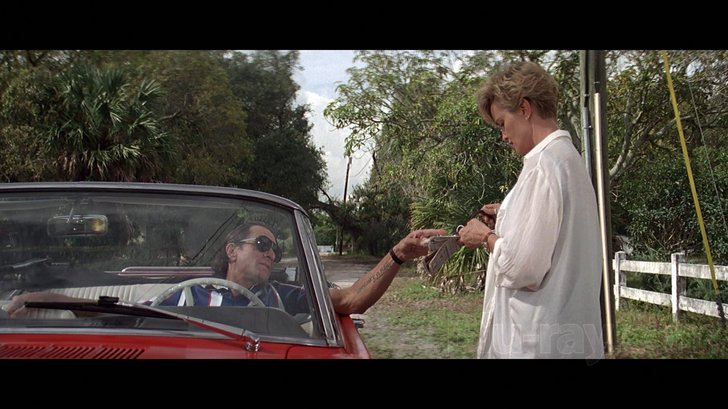
The extras have been ported over from the 2001 two-disc DVD "collector's edition". They offer subtitle options in English SDH and Spanish (but not, as on the DVD, French). Omitted from the DVD's extras are the production notes, cast and filmmaker bios, and DVD-ROM features (notably, the script).
- Deleted Scenes (SD; 2.35:1, non-enhanced; 9:14): There are 12 scenes. Most represent additional (and unnecessary) elaborations of elements that remain in the finished film, although an intriguing speech by Cady recounts an interaction with one of his prior victims.
- The Making of Cape Fear (SD; 1.33:1; 1:19:57): This comprehensive documentary covers the film from early script drafts to the adaptation of Bernard Herrmann's score by Elmer Bernstein. It includes extensive interviews with Scorsese, screenwriter Wesley Strick, producer Barbara De Fina, editor Thelma Schoonmaker, De Niro, Nolte, Lange and Lewis. Any fan of Cape Fear will want to hear their observations and insights.
- Behind the Scenes of the Fourth of July Parade (SD; 1.33:1; 2:13).
- On the Set of the Houseboat (SD; 1.33:1; 1.44:1).
- Photograph Montage (SD; 1.33:1; 9:05): Three groups of photos depict De Niro's physical transformation into Max Cady; the principal cast; and Scorsese directing.
- Matte Paintings (SD; 2.35:1, non-enhanced; 0:55): Comparisons of key shots with and without the composited matte paintings created by Illusion Arts.
- Opening Credits (SD; various; 11:42): The late Saul Bass's unique credit sequences for Vertigo, Psycho, Spartacus and Casino.
- Theatrical Trailer (SD; 1.85:1, non-enhanced; 2:36): It was wonderful in its deceptively peaceful opening, after which it suddenly turned dangerous.
- My Scenes
- pocketBLU™
- BD-Live
Cape Fear Blu-ray Movie, Overall Score and Recommendation 
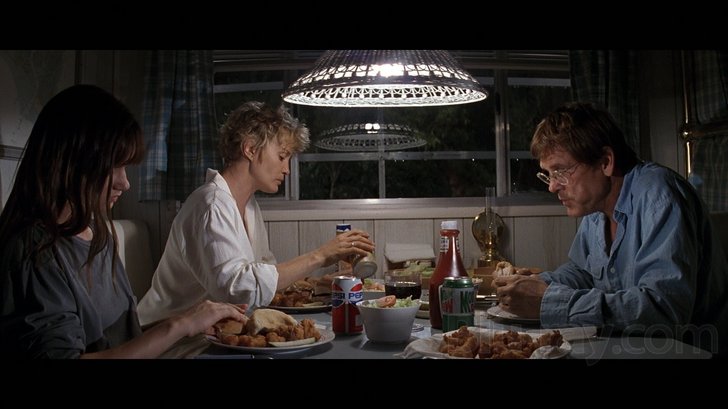
Max Cady was the last role (to date) for which Robert De Niro received an Oscar nomination. To a large extent, he's been a victim of his own success. After his Jake La Motta, probably no one expected him to create a character even more extreme; and after Max Cady, he hasn't tried. Indeed, since Max, he's more often seemed drawn to characters who are controlled, even low-key, like Neil McCauley in Heat or Sam in Ronin or the weary cop Turk in Righteous Kill. (The comedies are another subject altogether.) In his next and, as it turned out, last collaboration (for now) with Scorsese, De Niro played a Vegas numbers guy, Ace Rothstein, who wasn't even a true gangster. In retrospect, Max Cady appears to be the summing up of all the dangerous, extreme outsiders De Niro and Scorsese developed through their long partnership, and by far the worst. He's the synthesis of everything nightmarish in Travis Bickle, Johnny Boy, Jake La Motta, Rupert Pupkin and Jimmy Conway, tattooed with Scripture and filtered through the Bible Belt. Lock your doors and windows, and hope Max doesn't find another way in. Highly recommended.
Similar titles
Similar titles you might also like

The Silence of the Lambs
1991

Cape Fear
1962

A Clockwork Orange 4K
1971

Se7en 4K
Seven 4K
1995

Hannibal 4K
2001

Taxi Driver
40th Anniversary Edition
1976

Sleepers
1996

Insomnia
2002

Straw Dogs
4K Restoration
1971

Gone Girl
2014

You Were Never Really Here
2017

Mystic River
2003

King of New York
1990

A History of Violence 4K
International Cut
2005

Law Abiding Citizen
2009

The Girl Who Kicked the Hornet's Nest
Luftslottet som sprängdes
2009

Drive
2011

The Offence
1973

Nocturnal Animals
2016

Red Dragon 4K
2002
